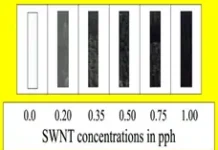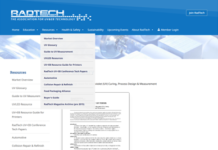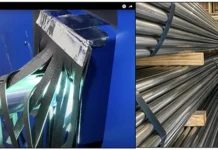Inspiration for my columns come from a variety of sources. This one is dedicated to my smart, but headstrong, teenage niece.
UV LEDs are teenagers. Commercially available UV LEDs – that by today’s standards were relatively low power – first appeared somewhere around 2003. By 2008, power levels had increased and unit costs had dropped, making UV LEDs a viable alternative for some types of curing applications. As UV LEDs enter their teenage years, their increased power and bandwidths have made them a viable alternative for new uses and applications.
Based on my early career experience teaching middle and high school science and coaching teenagers, I can unequivocally state that the Russian proverb popularized by President Reagan – “Doveryai, no Proveryai” (“Trust but Verify”) – applies to both teenagers and UV LEDs. Full Disclosure: I consider myself lucky that cell phones and social media were not around to document my teenage misadventures.
This issue’s column starts with a look at UV LED technologies and finishes with an interview with GEW (EC) Limited’s Robert Rae, managing director – sales, and Jennifer Heathcote, business development manager.
Part One: What Needs to be Verified?
1. Power: With great power comes great…?
Teenagers: Listen to teen athletes trash talk in the gym and you will hear: “How much can you bench press? Dude, I just did 240 pounds.” The talk most often refers to the maximum weight for a one-time bench press. What if the best performance is achieved by finding the weight amount the teens could bench press 10 times? Or 20 times? Are there parallels with how formulations perform? Do some formulations react better to single high-intensity exposure and others react better to a longer exposure of lower intensity?
LEDs: Source suppliers were at one time engaged in their own trash talk with claims of how much power their latest LED delivered: “Dude, I have 24 Watts/cm2 at 395 nm! The early thinking was that the higher the irradiance, the better the LED. Where was the value measured? What happens to the life of the LED if it is run continuously at that output level? Today’s LEDs, in most cases, deliver plenty of power and you should (hopefully) hear discussion of both irradiance (W/cm2) and energy density (J/cm2) values. Most importantly, what does your formulation and process need?
2. Advice: Where did you get that advice?
Teenagers: Adults – as well as teenagers – can be led astray with information gathered from “friends” or the internet. We work to educate our teenagers about being careful but sometimes forget it ourselves. Abraham Lincoln first pointed this out in 1862 when he stated: “The trouble with information on the internet is that you never know if it is genuine.”
LEDs: When it comes to UV and UV LEDs, the spectrum of knowledge runs from excellent to poor. Qualify the source of the advice and question if it makes sense. When measuring LEDs, using instruments with responses optimized for broadband sources or without the correct dynamic range can be extremely misleading.
3. Truth: Can you tell me the ‘whole’ truth and not a partial story with ‘holes’ in it?
Teenagers: Do your teenagers get frustrated with your probing questions? Does getting the whole story feel like an interrogation? Sometimes, technology can be a good thing for a parent. Online grade reporting makes it harder to change a “D” into a “B” and cell phones can be used to corroborate information.
LEDs: Customers get frustrated when I ask multiple questions to fully understand their situation. Verify the information below to get the whole truth about your source, formulation and measurement of an LED process.
Source
- Center Wavelength (CWL): LEDS are specified with an expected range of their most intense output. Most LEDs use a +/- 5 nanometer (nm) tolerance, which means the peak output for 395 nm should fall between 390 nm and 400 nm. Verify this, especially if you are testing multiple sources or have multiple wavelength LEDs available.
- Optics: Does your LED utilize secondary optics to redirect the energy coming from the diodes? If comparing two different sources, this could impact the UV being delivered.
- Maintenance: Follow the manufacturer’s guidelines for maintaining your LED. Check and keep the quartz window clean.
- Power Rating/Setting: Verify the power class of your LED and the selected setting (percentage) on your power supply. The power delivered to and measured at the substrate level normally is less than the rated LED power value. Verify that your LED can deliver the appropriate number of both Watts and Joules.
- Heat: LEDs are cooler than broadband sources but not completely heat free. Understand how this impacts your process.
Formulation
- Process Window: Do you have a process window set up with the CWL spectral output of the LED specified along with target Watt and Joule targets?
- Surface Cure: Does the LED provide adequate surface cure, or do you need a “boost” from a shortwave rich UV source, PI package or special inerting?
- Other: Are there any other variables that you need to verify?
Measurement
- Instrument Response: Verify that the instrument responsivity is optimized for your LED.
- Dynamic Range: Verify that the instrument dynamic range is optimized for your LED.
- Instrument Sample Rate: The footprint of many LEDs is smaller than that of mercury-based sources, which means the time under the UV source will be much shorter. Verify that the sample rate of your radiometer will support the speed at which you plan to collect data.
- Data: Organize your data and record all information (W/cm2, J/cm2) that is available from the instrument. If your instrument supports transfer of additional data, like the irradiance profile, also save that information. Attach notes if possible.
- Stability: We ask customers to take three sets of data with a single instrument under the same exact process conditions to understand the stability of their system and data collection process. After we understand a system, we then will investigate readings between multiple instruments and/or multiple sources.
- Closeups: LEDs have thousands of individual point sources. Positioning the instrument optics at different positions under the LED quartz window can lead to slight differences in the readings, especially if you are extremely close to the quartz window of the LED.
- Instrument Care: Follow the guidelines from the manufacturer on how to use, care for and clean your instrument. Do not forget that your instruments need periodic calibration and service.
Parting Thought: “I thought raising teenagers would be like those goofy old Brady Bunch episodes about curfews, acne and dating. It is not. It is more like Survivor meets Dateline: Hang in there and do not murder anyone.”
Quote from www.raisingteenstoday.com
 Jim Raymont
Jim Raymont
Director of Sales
EIT LLC
jraymont@eit.com





